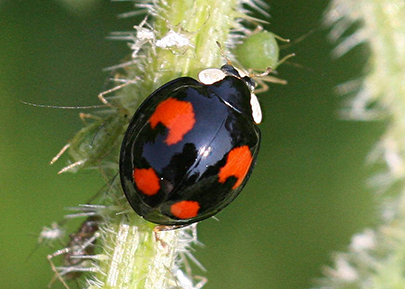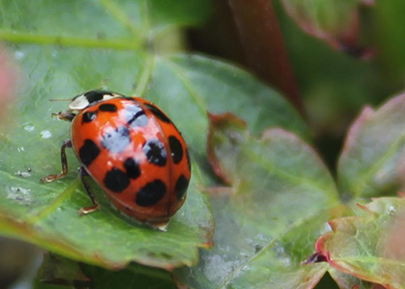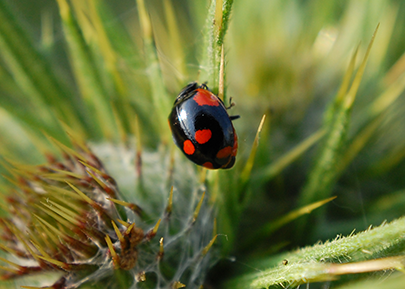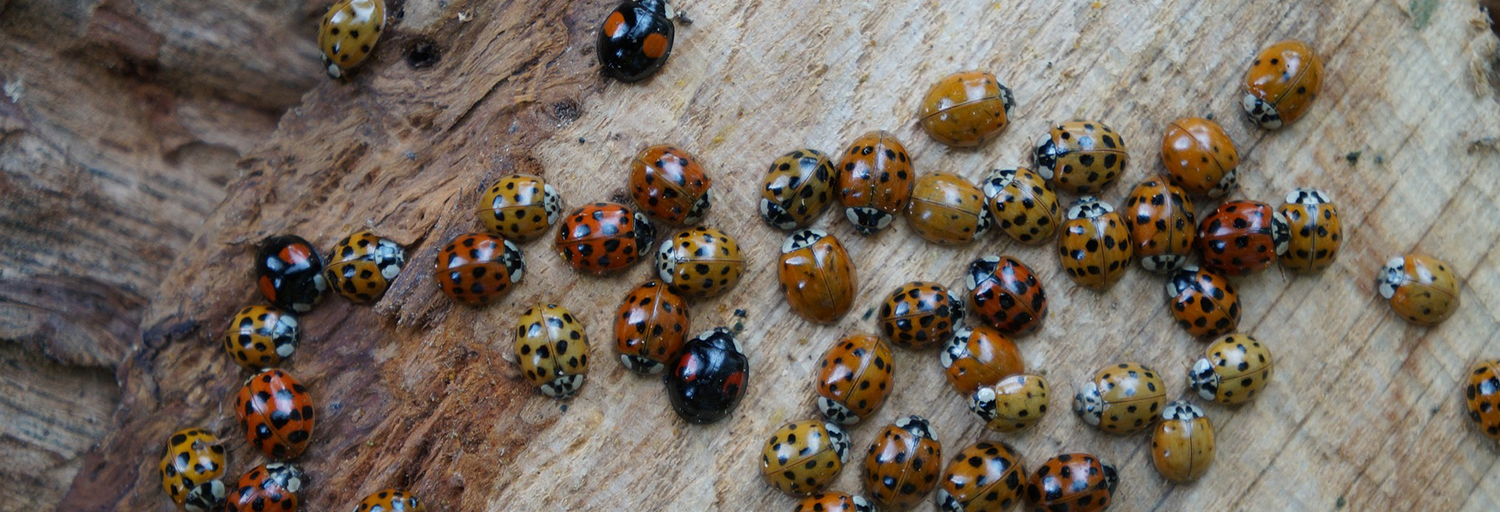There has been a flurry of news items on ladybirds in recent weeks. Much of the focus has been on the harlequin ladybird and the way in which this species moves into houses for the winter months.
Autumn and winter can be an adverse time for ladybirds (and other insects) because of low temperatures and lack of food; ladybirds become dormant.
Each species chooses a different place to settle. Seven-spot ladybirds, Coccinella septempunctata, opt to move in underneath leaf litter. Water ladybirds nestle into reeds. Harlequin ladybirds and 2-spot ladybirds commonly come into buildings. Often ladybirds form large groups in their overwintering habitats. Harlequin ladybirds are often reported to the UK Ladybird Survey in very large numbers – often 100s and sometimes 1000s.
Harlequin ladybirds and 2-spot ladybirds commonly come into buildings
We have studied harlequin ladybirds for many years. Using the amazing contributions from thousands of people to the UK Ladybird Survey we have been able to track the invasion of this species to the UK. The declines of some native ladybirds have been correlated with the arrival of the harlequin ladybird.
Another common theme of the recent news coverage has been concern about a sexually transmitted disease which ladybirds can carry. All ladybirds carry parasites and diseases. They can't be transferred to humans or in most cases even other beetles.
We have shown that harlequin ladybirds are more resistant to some parasites and pathogens than native ladybirds. All this has been possible because of people submitting records to the UK Ladybird Survey. Utterly incredible.


Colour variations
Perhaps one of the most surprising features of harlequin ladybirds, and one that often causes confusion in identification, is the variation in colour of the wing cases. Most harlequin ladybirds are orange-red with black spots but some are black with red spots. They are all the same species. The bright colours of ladybirds are thought to be warning predators that they are not appetising because they contain a cocktail of foul tasting chemicals. Such warning colouration is called aposematism. From an evolutionary perspective all aposematic ladybirds should look the same and thereby give a consistent warning message to potential predators; the variation in colour pattern presents a conundrum.
The 2-spot ladybird Adalia bipunctata is another variable species. The typical form is, as the name suggests, red with two black spots. But 2-spot ladybirds also commonly display black colouration with four or six red spots. Some detailed studies have shown that 2-spot ladybirds are much more palatable than other ladybird species and so they mimic their more toxic relatives. In some localities this will be red ladybirds with black spots and in others black ladybirds with red spots. However, harlequin ladybirds are among the most distasteful so this does not explain their colour pattern variation.
So what else could explain the variation? There is evidence to suggest that colour pattern varies with temperature. Dark colour forms heat up more rapidly than orange-red colour forms – so called “thermal melanism” – and might have an advantage over the orange-red colour forms at low temperatures. We have shown that the orange-red colour form of harlequin ladybirds is less likely to occur in woodlands than the black colour – perhaps providing some tantalising evidence that temperature effects might be at play. Additionally recent research has shown that the black spots on harlequin ladybirds are larger when the ladybird has pupated at cool temperatures compared to those which pupate in the warm summer months.


A mainly red Harlequin ladybird with black spots, and a mainly black 2-spot ladybird with red spots.
There are a number of theories as to why ladybirds are so pattern-variable but there is still so much to be revealed. The answer is not simple and it is exciting to think that there is so much yet to discover for this popular group of insects.
Ladybirds in your home
As winter draws in, please continue to send us your records of ladybird sightings as these are valuable for our continued research. If they have entered your homes in large numbers we encourage you not to harm them - native and non-native species can be easily confused. Perhaps gather them gently into a box and put them in an outbuilding if they are in the way but, otherwise, just leave them where they are if possible.
Perhaps gather them gently into a box and put them in an outbuilding if they are in the way but otherwise just leave them where they are if possible.
